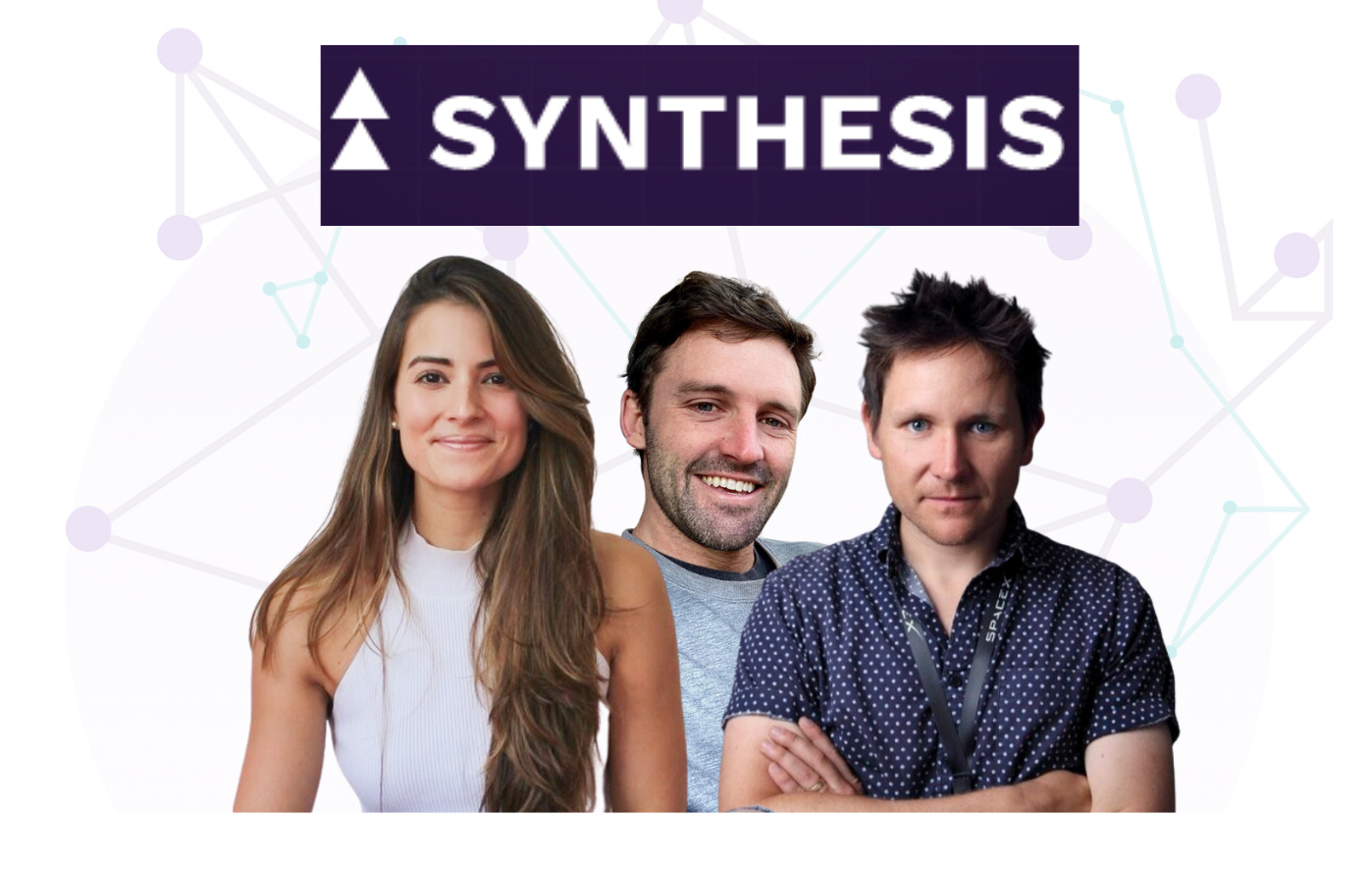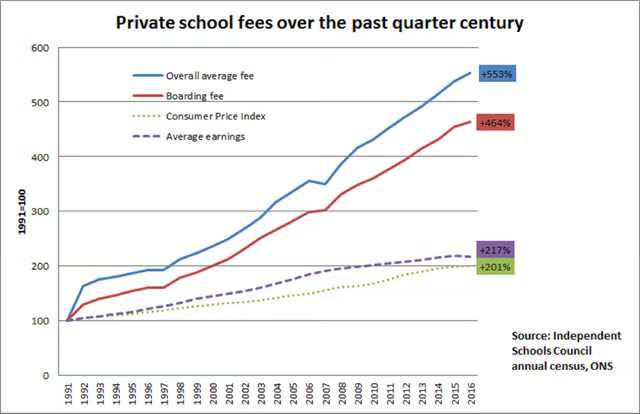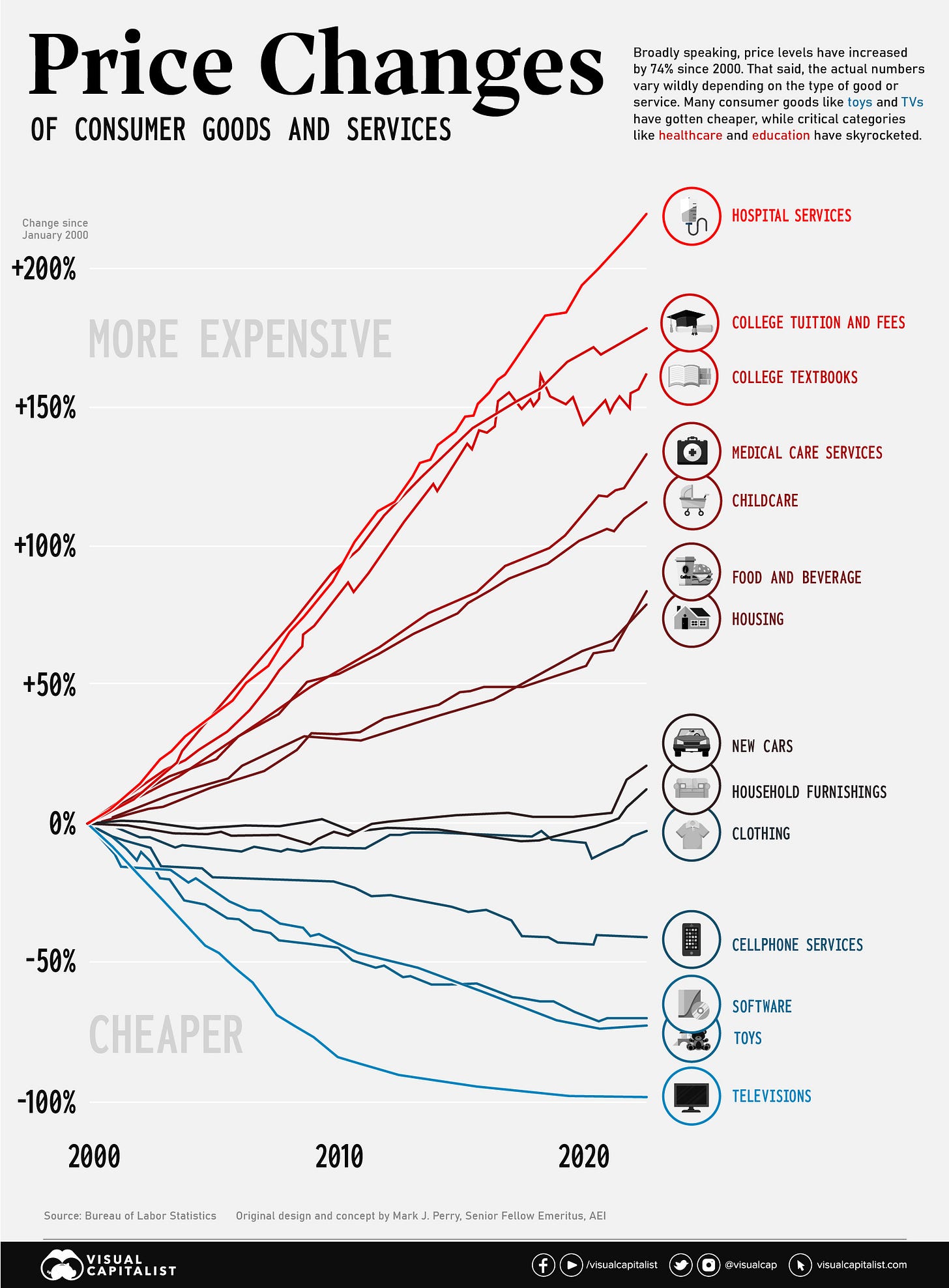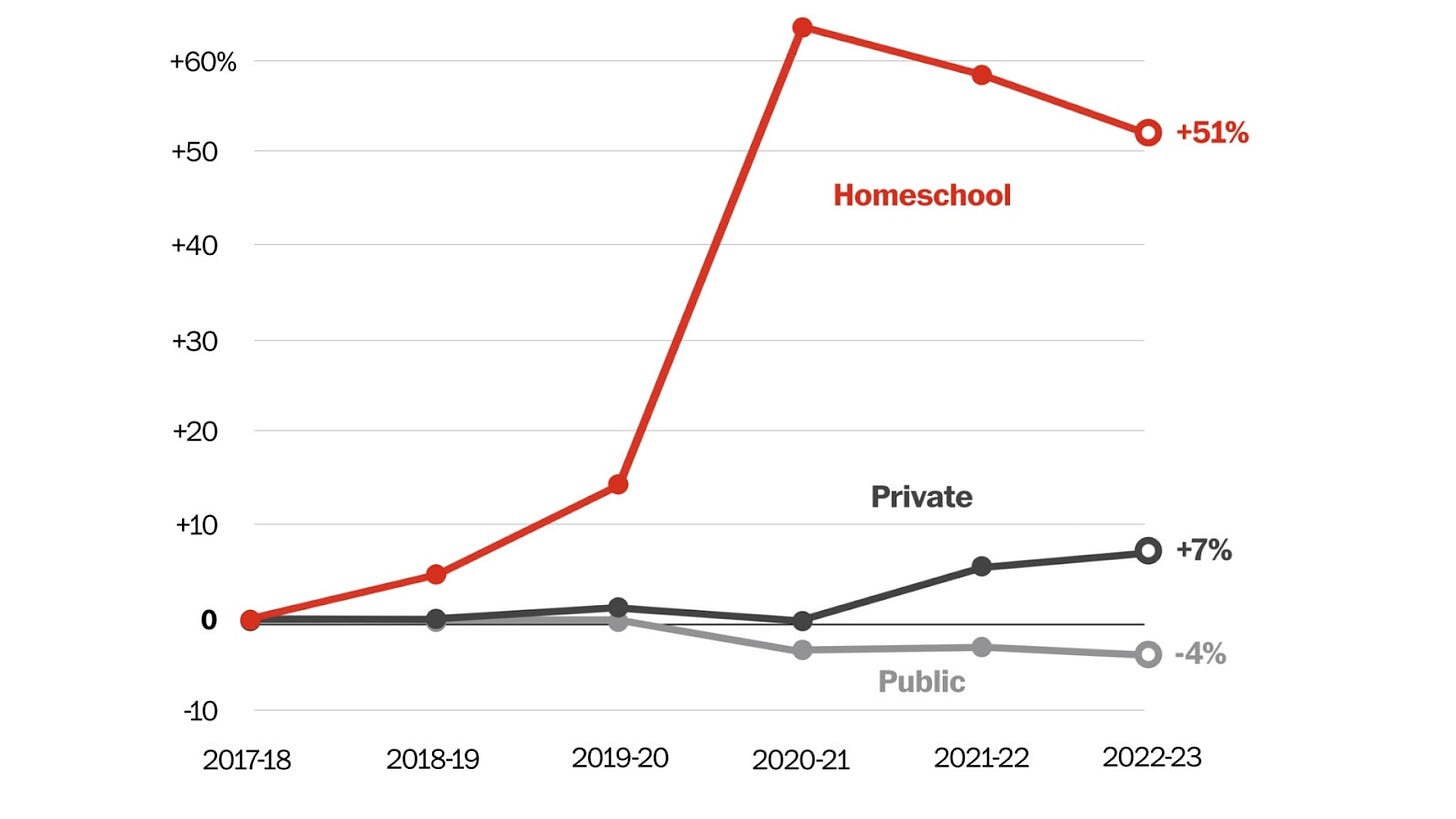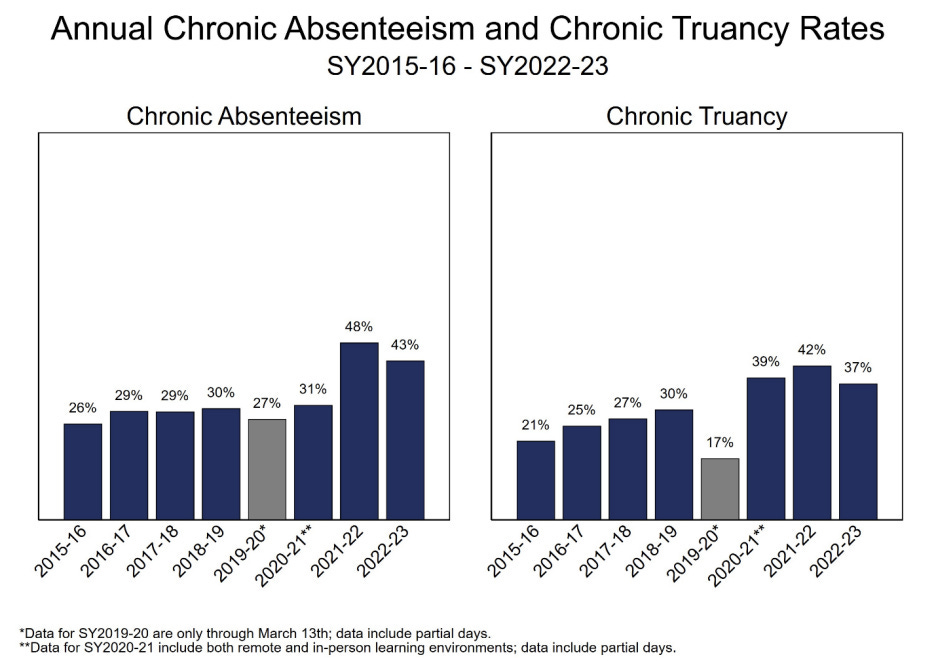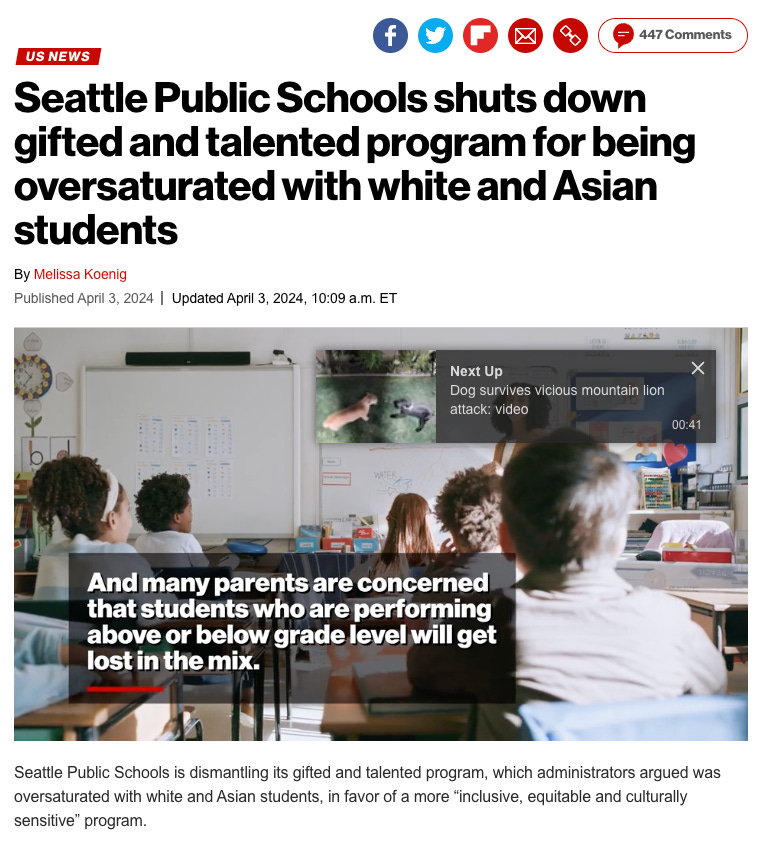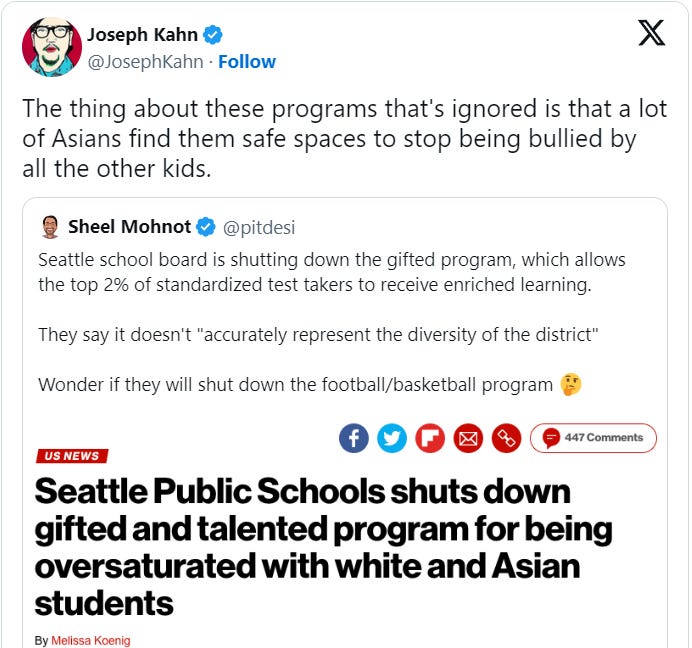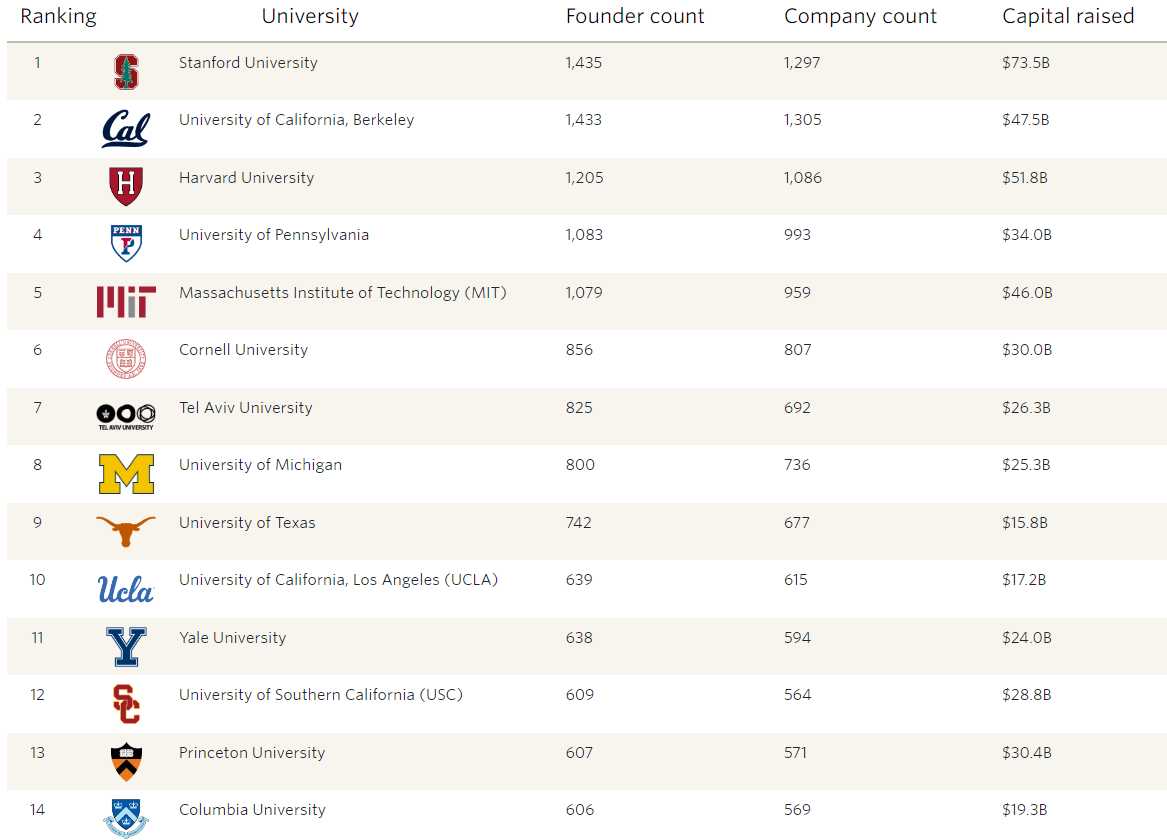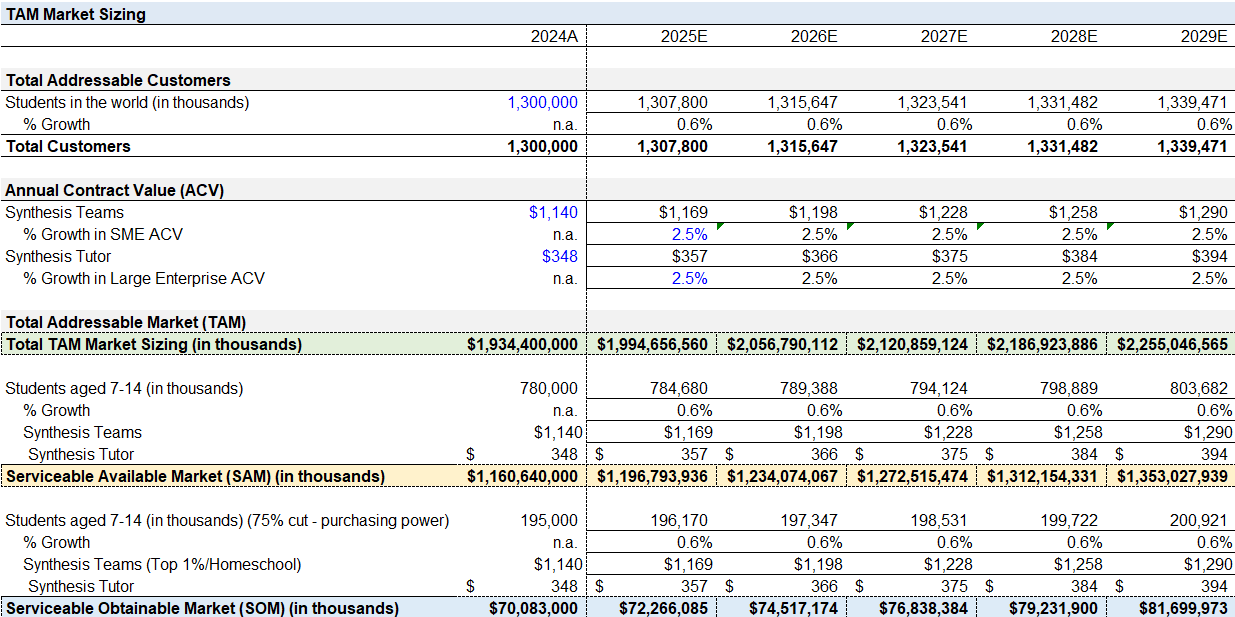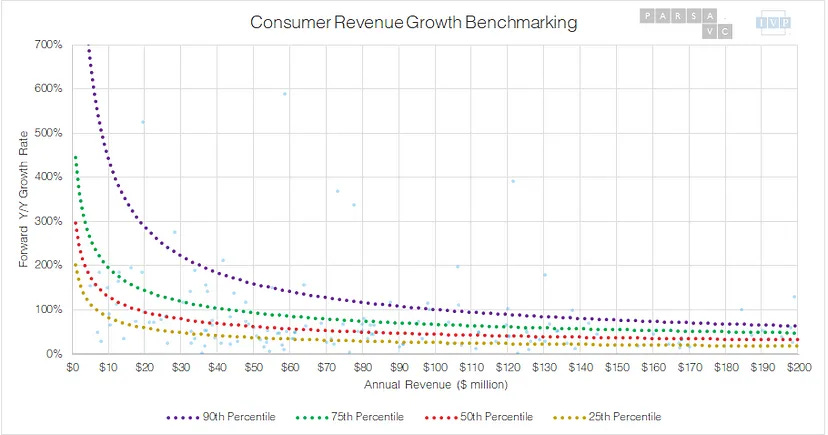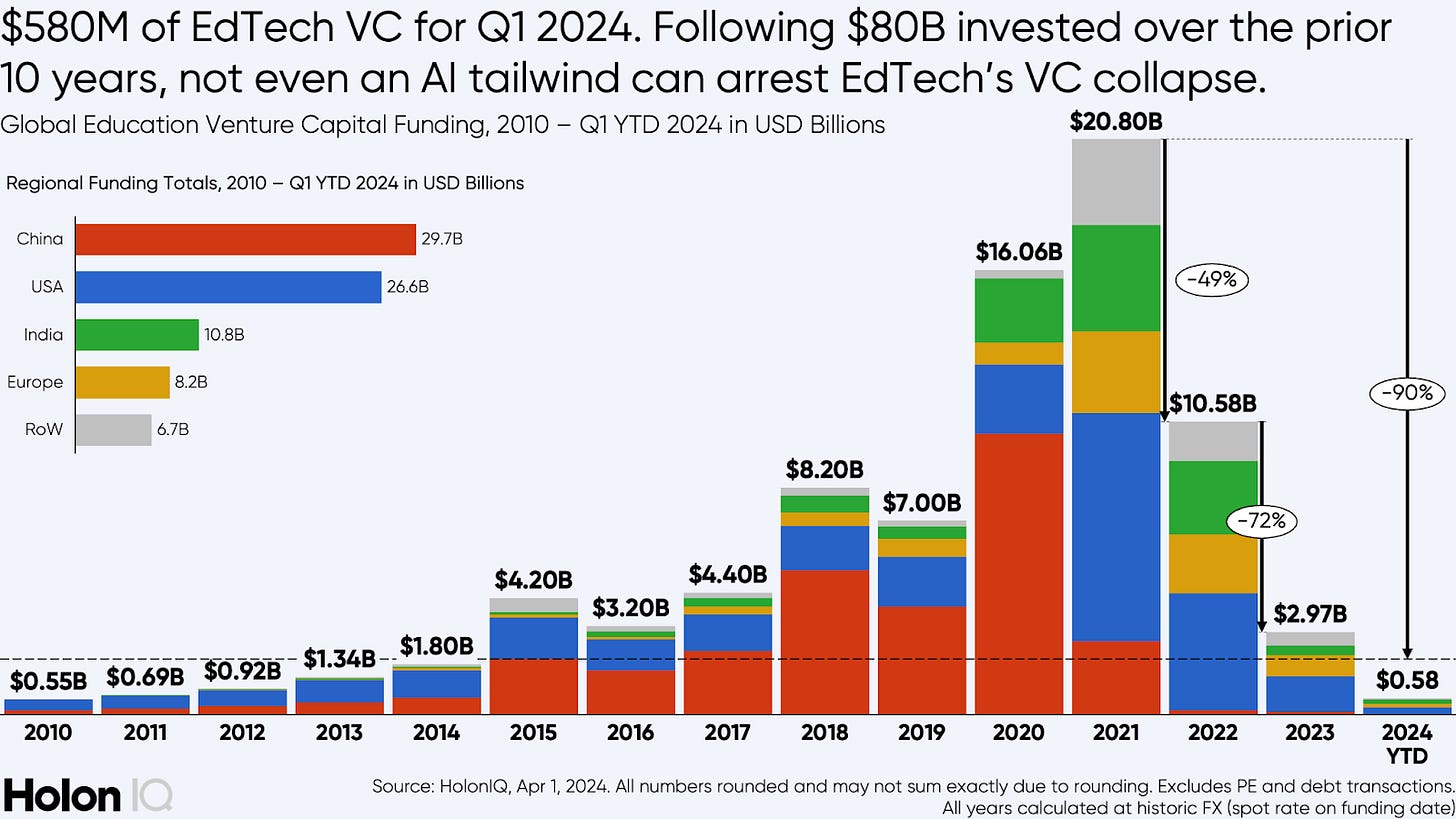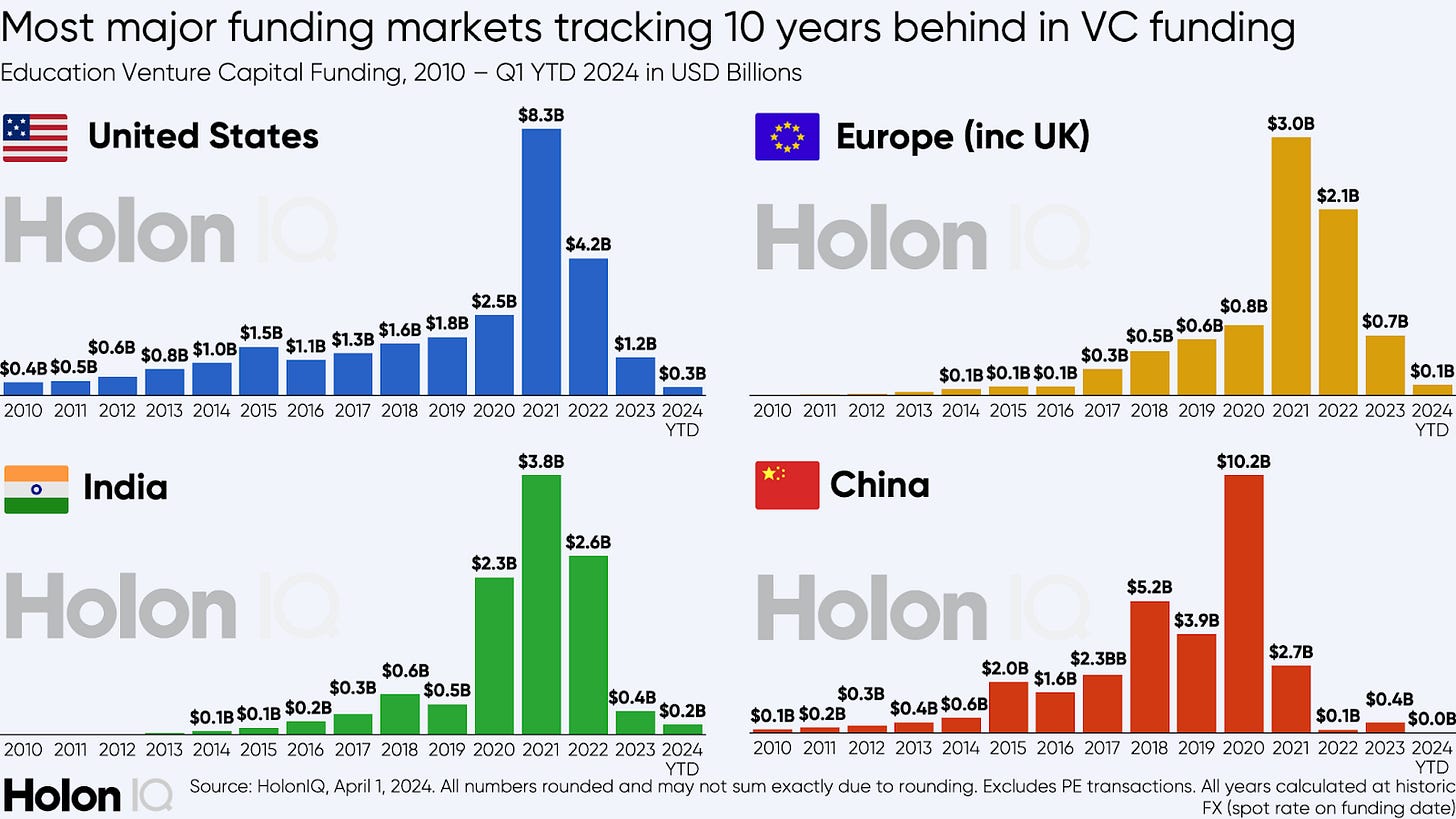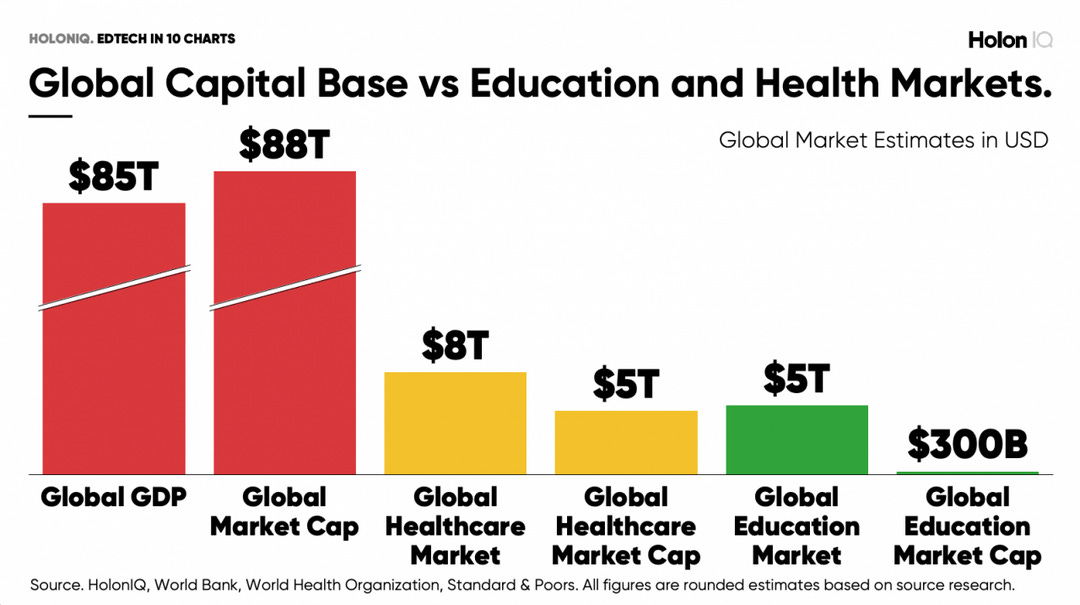Today, I will write a mock investment memo on why, based on the public information I have available, I would invest in Synthesis.
What is Synthesis?
Synthesis is an ed-tech platform founded by the creator of SpaceX’s Ad Astra school in collaboration with Elon Musk, a homeschool program for children of SpaceX employees to learn complex problem-solving and communication skills.
Here’s how Synthesis described their company on their Wefunder fundraise page. You can check it out to watch a video about how it all works here: LINK. It’s a really cool video.
“Students ages 6 to 14 join a cohort that meets once a week to play novel, complex games and simulations.
Sessions are moderated by an adult facilitator, whose main role is to encourage clear communication and rigorous analytical thinking.
Think challenging video games + the Socratic method.
Our aim is to cultivate supercollaborators.
Individuals with the capability to effectively work together to solve our civilization’s most challenging problems.
To kids, it feels like playing a game with friends.
To parents, kids are learning the world's most valuable skill: how to solve complex problems with a team.
Our goal is to make Synthesis available to every child in the world.
But our first commitment is to the top 1% by cognitive ability and commitment. Our current system is cutting off the runway for our most advanced students. We believe in doing the opposite—challenging these students as much as possible so that they build the capabilities to solve big problems for all of us. Education is a positive-sum game.”
Synthesis does this in two ways, as you can see below:
Synthesis Tutor is $29 a month, taught via a responsive AI that is a more than viable replacement for a human tutor. More on this later.
Synthesis Teams, on the other hand, is a program where children all around the world meet once or twice a week for a few hours to play games with each other. These games are all built around solving difficult problems where communicating with your team is necessary. Everyone is participating, learning by doing, competing, and having fun. Again, I encourage you to watch this quick one-minute video to understand how it works. It’s pretty remarkable.
As you may guess, the program works really well. Synthesis claims that students who use their Tutor and Team programs perform better than 99.99% of students. That’s good company.
Why Now? The Problem with Our Current Education System:
Normally, I’d split up the problem and the why now sections in a typical investment memo, but I think the problem Synthesis is addressing is the why now. The problem is the current education system.
Three problems are deteriorating our education system:
Increase in the price of schooling.
Prices are going up. And before you even start, let me shut down any arguments that it’s rising with inflation or earnings because, clearly, it’s not.
What’s ironic is that technology prices are going down, so every day, it’s becoming cheaper than ever before to access all of the information in the world. These things should be correlated but aren’t due to political and regulatory reasons.
Education costs are increasing, but software costs are decreasing. Therefore, ed-tech should become cheaper every year while traditional education continues to become more expensive. Synthesis is not providing an alternative to college education, but it could further a movement in children and teens away from private schools and public schools and closer to homeschooling, a trend that has been increasing.
Now, there’s obviously a major COVID bump, but that COVID bump seems to be pretty sticky. By 2022, we had vaccines and boosters. Some parents still felt their schools weren’t safe, but I think many parents realized their kids weren’t learning much at their schools. They could see what was happening on Zoom and how disengaged their children were, so why pay for it?
Absentee rates
Not only do parents feel their kids aren’t learning much, but clearly, so do students, based on the huge bump in absentee rates since COVID-19.
Kids aren’t learning because they aren’t interested in the content, and that content can be a “unit” that takes a month of forcing uninteresting information into the mind of an already distracted twelve-year-old. That model just doesn’t work well.
Schools are No longer cultivating gifted students.
The twisted response to students' decreasing engagement rates is to abandon supporting the smartest students who are actually there to learn since it’s unfair to the students who have no interest in learning.
This is one of the most confusing situations I’ve ever seen in an administrative decision-making process. Education drives prosperity in a country. You will never win a game of Civilization if you don’t dedicate enough resources to education and science. Civilization is law and truth, obviously, so our elected leaders are getting everything backward by abandoning cultivating the growth of our brightest minds. That’s the foundation of a prosperous society.
So, education costs are increasing as students become more disinterested in attending school, while schools abandon support for the kids who actually want to be there.
What a bizarre sentence that’s somehow true.
Many studies suggest kids learn faster than adults. As a society, we can’t waste that potential and wait until our children are adults and finally want to learn. That’s such a wasted opportunity to cultivate exceptional people in our world. Luckily, we have companies like Synthesis that completely disrupt this broken education system to reignite the potential energy in students who desire to learn if taught correctly.
How Does Synthesis Address These Problems?
Three reasons why Synthesis is important to parents:
Gifted students have a place where they belong.
Kids go through a ridiculous amount of social pressure in their lives. Excellence in school is made fun of because it’s not cool, so smart students in a large classroom may feel scared to answer questions correctly so they don’t get made fun of.
These gifted programs are a place where children can feel safe being who they want to be with people just like them. By taking away these programs, these schools are increasing bullying and severely decreasing excellence and motivation in our brightest children.
Synthesis provides a learning environment where kids want to be there and have fun solving challenging problems together. They’re not getting made fun of for being smart but praised for it. Even if kids have to go through the grueling experience of being smart in public school, they can be comfortable that when they get home, they can go online with their friends in London, Nairobi, and Tokyo to play fun and challenging games together where they’re experiencing the joy of learning.
A Higher GPA leads to higher earnings.
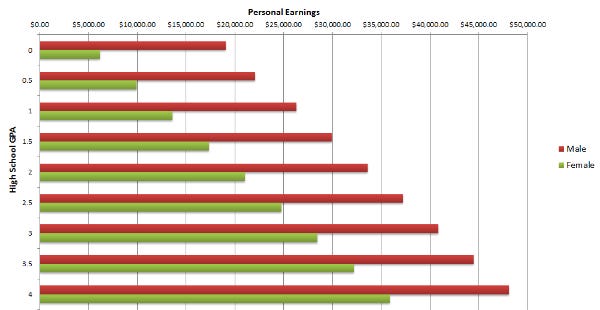
Since Synthesis is proven to take your kid into the 99th percentile of their school, seemingly a 4.0 GPA, they should earn more money in the future, making the education payoff worth it.
Again, your child is getting an education designed by SpaceX engineers for $125 a month for both the Tutor and Teams program. I’d argue you can save the need to send your kid to a private school until they’re in high school and just supplement a public school education with this ridiculously cheap education program designed by DARPA researchers.
If you’re not a wealthy family, this is really important because your kid can be independent and, ideally, help you pay your bills or with retirement. Many parents will do whatever they can to give their kids a great education, such as spending tens of thousands of dollars a year on private schools. Synthesis presents an opportunity for those parents not to feel like that is the only way for their children to get a great education; rather, they can supplement public school education with the Synthesis programs. Then, your child will attend a great university, earn a high-paying job, and be able to support themselves and you as a parent.
Also, the highest performers in high school, as determined by which universities they attend, have the highest chance of being entrepreneurs and leaders in business, giving them a higher chance to have an outsized impact on society and, therefore, an outsized impact on their personal wealth.
(Obviously, where someone goes to school does not determine whether they will be successful. In fact, the recent Cowboy Ventures unicorn report suggests this is becoming increasingly less important, though it is still a strong indicator of future success for entrepreneurs and business leaders. Also, I understand there are other impactful professions in the world besides entrepreneurship, but it’s number one in my book, so I’m using it as my example.)
Synthesis Develops leadership skills.
Most schools don’t teach leadership skills like communication, problem-solving, or decisiveness; they teach you how to memorize information to pass a test. Sometimes, they’ll do the occasional group project to work on communication and collaboration, but often, one or two kids do most of the work because they’re the only ones who care about having good grades.
I personally did not learn these skills in the classroom; rather, I learned them on the basketball court or the soccer field, as many others do. That’s the beauty of team sports; it teaches you vital leadership skills that I argue are more important to a successful career than what you “learned,” (more like what you had to sit through) in the classroom.
Unfortunately, not many academically gifted kids participate in team sports, so they don’t learn these leadership skills. They study and study in solitude so that they’re experts in their domain, which is highly commendable; however, when ambiguity enters a stressful decision-making environment, these people can underperform.
What’s so great about Synthesis is that it provides those academically gifted children with an environment where they can learn how to apply their strengths and develop those leadership skills typically learned in team sports. What sports also teach you that is vital to a successful career is grit—the ability to get back up thousands of times after losing thousands of times. Once again, that’s not something you can learn; it’s something you have to experience.
These team games in Synthesis are a competition. You’re competing against other exceptionally smart children in a high-intensity environment, and you’ll probably lose quite often. The ability to work hard to perform better next time is grit.
Therefore, Synthesis provides an environment where academically gifted students with no interest in athletics can learn vital skills like communication, quick decision-making, grit, and so on in an environment where they best perform. That’s fantastic!
I’m a major advocate for youth sports and hope my children try every sport that interests them, but if my kid never touches a ball and just grinds on Synthesis Teams, I’ll be content that he or she is learning the skills I hope for them to learn in team sports.
Market Size:
Synthesis’s long-term goal is to be available to every child in the world. Though these numbers are hard to find, it seems like there are roughly 1.3 billion students in the world aged 4-18. If you take all of those students and enroll them in the Synthesis Tutor and Team programs, which cost about $1,448 a year, then Synthesis has a $1.9T a year revenue opportunity.
Now, I personally don’t like initial massive markets like this one, and I’m sure it’s a key factor in why many ed-tech companies initially fail. They go after too large a market, and you can’t cater to both a four-year-old and an eighteen-year-old as a small company.
I suspect that is why Synthesis is still only focused on kids aged 7-14, and only the top 1% of students based on cognitive ability can use Synthesis Teams. Any student can use Tutor, however.
So, you could argue that Synthesis began by targeting kids aged 7-14 who are brilliant. That’s creating a niche because instead of targeting 1.3 billion students, they’re targeting an age group that’s maybe 800 million students globally, and if they’re only targeting the top 1%, that’s only 8 million students. That’s still a large market, but it’s one I can get behind because it’s very targeted in its approach.
Synthesis can get to a $100m a year run rate while targeting their initial niche and continue to expand to students who aren’t as gifted cognitively and continue to slowly expand to increase their addressable market and revenue run rate.
What I like about the SOM, otherwise known as their most obtainable market based on today’s product, is that it is large at $70 billion but also very specific. Sure, 25% of the world’s students aged 7-14 using their Tutor program is ambitious, but certainly possible. The Teams portion of this SOM is obviously very small and likely will increase. I suspect they will eventually expand the program to the top 5% of students of cognitive ability, to then 10% and 20%, and so on. This should supply Synthesis with a jolt of growth while not compromising the quality of the product since the top 5% of students likely aren’t too different from the top 1% of students.
Therefore, I actually really like this market because while $70 billion is larger than what I typically like, that $70 billion is coming from a very targeted group within the broader market in an industry where most of their competitors will go after a much wider swath of students. When compared to other ed-tech companies, Synthesis is playing a focused game.
Traction/Business Model/Indirect Competition:
Normally, I’d split these three sections up, but as I wrote, I ended up talking about all three points of emphasis that coincided well together, so just bear with me on this longer-than-average section.
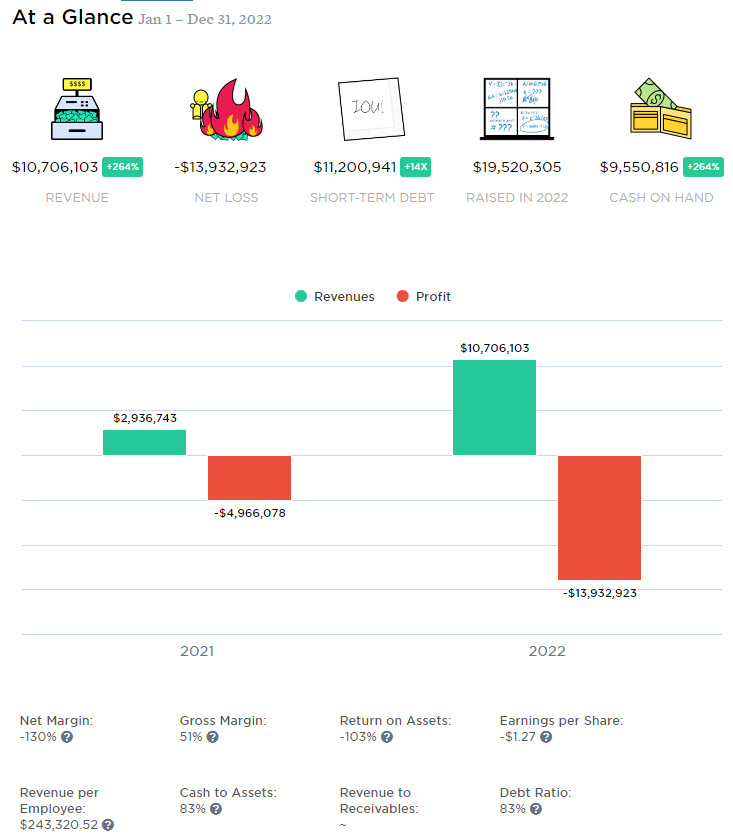
When I saw this graphic, I thought it seemed like a strong growth rate with a high revenue number, which is a good sign.
This chart shows the growth rate of consumer startups that IPO’d between 2010 and 2018. Even a 25th-percentile company is an IPO company, so this chart showcases very high-quality companies—the top 1% of the top 1% of consumer startups.
Based on this chart, Synthesis is somewhere between the 50th and 75th percentiles based on its growth rate. Again, this is compared to consumer startups that IPO’d, which suggests that Synthesis’s growth rate is very strong.
It remains to be seen whether that growth continues, but Synthesis also noted how they had a waitlist for students as of Q3 2022, so it seems they have high demand for their product.
Additionally, something not shown here but is vital to assess for a consumer subscription product is the blended CAC to LTV ratio.
For those who don’t know, CAC is customer acquisition cost. It can come via paid advertising, such as social media or search, or it can come organically via word of mouth. Blended CAC combines those two acquisition strategies because you may acquire a customer for $30 via advertising, but that customer may have told two of their friends who signed up for free via word of mouth. Therefore, your blended CAC is only $10 because you received three customers for that one $30 ad spend to secure that initial customer. LTV is lifetime value, which assesses how much money one customer pays you for your product throughout their subscription. So, if the product costs $5 a month, you’d need that customer to stay for at least three months to make that $10 blended CAC worth the spend since you’re receiving a profit on that relationship.
It’s one of the most important metrics for a subscription company, though it is almost never public information, so it’s hard to find, and in this case, I couldn’t find any information. Synthesis did say in this brief financial section of their fundraise page that they plan to be profitable by the end of 2023. Therefore, one could assume they have a positive blended CAC to LTV ratio. How positive, who knows? But positive is good enough for the time being.
My only concern is their 51% growth margin. This is quite low compared to many software startups, though I suppose Synthesis isn’t a pure software company.
Synthesis is more of an AI chatbot/gaming company than a pure software company. The Synthesis program involves students interacting with an AI instructor and playing games. These two technologies can be very expensive to develop and run, so I suspect it’s not as simple as Slack, a company with 85-90% gross margins, which creates one copy of simple software and replicates it. That’s very cheap once the product is fully designed.
This would suggest a lower gross margin. Still, Activision has a 71% gross margin, so gaming companies aren’t that much lower than pure enterprise software companies in terms of gross margin. I’d be curious to compare Synthesis’s gross margins with OpenAI and Perplexity since the cost of performing searches is very expensive for those companies. Some predict their gross margins to be around 50-60%, so maybe those would be more comparable.
Regardless, this question brings me to my first recommendation for the company: raising prices.
As a reminder, Synthesis charges $45 a month or $29 a month billed annually ($348 a year) for their Tutor program and $95 a month ($1140 a year) for their Teams program.
Now, I think there are three ways you can view Synthesis. Consider these indirect competitors.
It’s an alternative to tutoring.
There are so many different numbers as to how much tutors cost, but for simplicity's sake, I will use $25 an hour for a typical math tutor, which apparently is the average in Washington, DC. Assuming you send your child to the tutor once a week, you’re spending $100 a month on that tutor. Depending on whether you do monthly or annual billing, this is about half or a third of the price of Synthesis Tutor.
While you may prefer a real person to interact with your child, I have two counters. One, the Synthesis Tutor will never be wrong, and it’s programmed to teach your child in a way that DARPA researchers claim puts students in the top 99.99% of their class. DARPA built the internet, so they’re a qualified bunch. Therefore, you know you’re getting the best tutor in the world, which can cost hundreds to thousands of dollars a month.
Second, you’re the human interface with your child rather than the Tutor. You can speak with your kid immediately after their session to ask them what they learned, and they’re looking for you to be that human supplement to their AI tutoring. I suspect this helps you build a better relationship with your child rather than your child building a relationship with a tutor. Synthesis is the tutor, but you as a parent are still the human they associate with learning if you spend time reviewing with your kid what they learned today.
Also, I don’t know for sure, but after signing up for Synthesis and going through some of the lessons, a kid can spend much more than four hours a month (four one-hour tutoring sessions) doing lessons via Synthesis. They seem to have dozens of hours of lessons that get updated monthly.
Therefore, rather than paying $100 a month for four one-hour tutoring sessions ($25 an hour) with someone you can’t guarantee is an exceptional teacher, you can pay $29-$45 a month for ~20 hours of tutoring (~$2 an hour) via an AI model that can be considered one of the smartest teachers in the world.
It’s an alternative to sports.
Your child could be terrified of sports, and you, as a parent, may be worried that he or she will not develop the life skills that come from sports, such as competitive drive, grit, quick decision-making, communication, confidence, and so on.
This is where the Synthesis Teams program comes in.
According to the Aspen Institute, the average cost of one child’s youth sports program is $883. That price probably includes one or two practices and one game per week. Synthesis Teams likely supplies a similar time allocation for its students—maybe slightly less, but similar.
At first glance, Teams ($1140 a year) seems more expensive than one child’s youth sports program ($883); however, this is just for one season, about four months. So, to compare a year of youth sports with a year of Synthesis Teams, it’s more like $2600 for youth sports compared to $1140 for Teams.
This is a stretch of an indirect competitor, and many Synthesis students likely also play youth sports, so there isn’t an either-or here. I’m just saying it seems to be a cheaper alternative to sports if your kids don’t want to play but you still want them to learn important skills.
It’s an alternative to private school.
This is the most compelling case I can make for having your child use both Synthesis Tutor and Synthesis Teams at $1,488 a year. Private schools can cost anywhere from $5,000 to $30,000 for your child (aged 7-14) to attend. I understand if, in high school, you want your kid to attend private schools as an extra bump to help with getting into top colleges.
However, when your child is in elementary and middle school, I don’t see the need for the ridiculously high price. Seemingly, your child will learn from more qualified teachers amongst smarter children, but Synthesis provides the highest quality teacher and the top 1% of students for your child to collaborate with.
Therefore, I think it’s a no-brainer to opt out of the $20,000-a-year private school for the $5,000-a-year private school or even the public school and supplement their learning with the Synthesis Tutor and Teams programs. Frankly, formal school might not even be necessary, but something about total homeschooling concerns me as I value daily social interactions with other children pretty highly for children.
Regardless, parents could pay $20,000 a year for a top education for their ten-year-old or $1,488 a year for the best education for their ten-year-old. I’m not a parent, but if I were, this would seem like a no-brainer.
All of this is to say that I think Synthesis could probably raise its prices by 50%. As I just laid out, Synthesis seems to have no-brainer prices compared to traditional tutoring and private schools, not to mention even better results for your child’s learning.
Additionally, I suspect Synthesis’ target audience is parents who care strongly about their child’s education.
As a result, I suspect Synthesis primarily targets two subsets of parents.
Homeschoolers
According to the National Center for Education Studies, 72.6% of parents choose to homeschool their children due to dissatisfaction with the academic instruction at other schools. I interpret this as parents not feeling schools are effectively teaching their children. If this is the case, then these parents will likely look for the best education possible for their children. If they feel it is at home, so be it, but I imagine many of these parents would love to supplement their children’s homeschooling with Synthesis programs.
Assuming all is true about kids loving the product and it being proven to enhance a child’s cognitive ability substantially, then it seems like a no-brainer for homeschooling parents. Since it should be a no-brainer for these parents who value their child’s education so much that they don’t trust the traditional school program, I suspect they’d be willing to pay around $2,250 a year (after my proposed 50% price increase) for the Synthesis Tutor and Teams program.
High-income Parents
$2250 a year is not cheap for education. Many parents can’t afford to send their children anywhere but public school. I assume Synthesis pays attention to that demographic of parents, but I suspect they pay more attention to high-income parents. These parents likely value education highly since they probably had a good education growing up, making them wealthy, so they likely have a high willingness to spend on supplemental learning programs. After all, some tutors can charge hundreds of dollars per hour, and some private schools can charge $30,000 a year. I suspect these parents, who highly value their child’s education and have a large budget, wouldn’t think twice about spending $2,250 a year rather than $1,488 a year if they see their children's love for learning on the platform and how much their child is improving.
To truly make this recommendation, I’d have to see the demographic of Synthesis’s parents. I’d have to know if they are mostly homeschooling or high-income parents, and I’d have to know how strong Synthesis’s retention is for the kids who sign up.
It’s hard to say no to your kid, and it’s especially hard to say no to your kid when what they’re asking you for is to learn. You tricked them! You win! Now, pay a little more for it! Give your Alexander his Aristotle!
Again, these are all assumptions, but I’d love to speak to the Synthesis team about their pricing strategy. It seems to me this product is substantially underpriced when compared to the competition.
If they can raise prices by even 25% and experience only 5-10% churn because of the raise, then their 51% gross margin will increase to a much more attractive number, and their growth rate will be minimally affected. This is the result I’d suspect if they do choose to raise prices.
Direct Competition:
Khan Academy
Khan Academy is a giant in the ed-tech space with over 150 million registered users. It is a free service that relies on donations to run and provides many lessons for students to learn. It offers a $4-a-month AI tutor, similar to a ChatGPT, to help you find the answers to questions.
Khan Academy is a great tool that I’m sure helps millions of students learn for free, which is incredible. It’s slightly different than Synthesis, however, as Synthesis counter-positioned themselves to align most with very talented students. Its lessons are more interactive and more challenging. In contrast, Khan Academy offers problems any student can solve, and there’s no AI tutor, such as Synthesis Tutor, helping the student learn through a more interactive service. Khan Academy is more like doing homework to cement the information you likely learned in school. Synthesis Tutor is more like a replacement for school since it’s more of a teaching environment.
I don’t necessarily have to think Synthesis has to beat Khan Academy—I think they’re different products going after different users. Many parents will elect to use Khan Academy as a free bonus to help their kids learn. I suspect that since it feels like homework, it won’t be something most kids enjoy doing, whereas since Synthesis relies on learning through games, which kids seem to enjoy, kids will elect to use Synthesis instead. Also, Khan Academy is designed for everyone around the world, while Synthesis targets the top 1%. I suspect the parents of the top 1% of students would much rather pay a premium to enhance their kid's education, and their kid will likely enjoy Synthesis’ interactive features much more than Khan Academy.
Duolingo:
In October 2023, Duolingo released Duolingo Math to replicate its success in language. It provides the same gamified learning environment that’s quick, exciting, and urges you to keep going. It has a free plan that lets you do a little bit every day and offers an unlimited premium subscription, which includes its flagship language product, for $12.99 a month, about half as much as Synthesis Tutor.
Again, Synthesis Teams is a completely different product, but I think Duolingo provides a similar experience to Synthesis Tutor. Like Khan Academy, Duolingo isn’t as interactive for children as Synthesis Tutor, but Duolingo is fun. It has fun mascots, exciting sound effects, and a leaderboard that makes you want to keep going. Do eight-year-olds like this learning environment as much as they’d like an interactive tutor that teaches through games rather than repetition like Duolingo? I don’t know for sure, but I wouldn’t assume so.
Also, Duolingo targets different markets and seems more targeted towards adults than children. As of this writing, Duolingo is a $9.4b company, so it is important for Synthesis to monitor its development as a potential competitor. However, I wouldn’t worry too much about them. They’re different companies with different strategies primarily targeting different markets.
Those are really the only viable competitors for Synthesis at the moment in the ed-tech/AI tutor space. Not many education programs were designed by SpaceX engineers, so it’s hard to compete with Synthesis directly. I’m sure competitors building products like Synthesis Tutor and Synthesis Teams will emerge, but being built by SpaceX engineers for SpaceX children is a pretty damn good marketing slogan for the top 1% of students in the world.
Team:
Whenever I speak with founders about their pitch decks, I always suggest they lead with their strongest features. If I were building the deck for the Synthesis pitch, I’d probably start with the problem using data I used in this essay, but right after, I’d go into why Synthesis is the ideal solution to this problem, leading with the fact that the founders of Synthesis created SpaceX’s Ad Astra school in collaboration with Elon Musk as a school for exceptional children of SpaceX engineers.
That’s a top decile founder-market-fit story compared to all other startups. If you have the Elon Musk stamp of approval, along with many SpaceX engineers, to teach their children, then I don’t think it would be hard for you to get that stamp of approval from many other people.
I don’t think I have to say more than that.
ROI for Investor/Long-term Vision:
Now, we’ll look into what is required for Synthesis to get to $100m in ARR and the long-term vision for their company.
I don’t know how many users pay for just the Tutor and just the Teams program, but assuming a 50/50 split with Teams being $1140 a year and Tutor being $348 a year, that means the average user is spending $744, so they need about 134,000 users, or 77,000 Tutor users and 77,000 Teams users, to achieve $100m in ARR. Assuming there are about 1,300,000,000 students in the world and 195,000,000 in their SOM, I certainly think this number is achievable.
As I covered above, it’s not a TAM problem. The challenge is changing parents’ minds that this program is more effective than a traditional tutor or a private school education—or at least a very strong supplement of the two for high-income families.
In a post regarding why he invested in Synthesis, Balaji Srinivasan wrote the following requirement for Synthesis to replace the education system altogether.
“First digital, then physical. A full replacement for the education system will eventually require physical locations. Too many parents depend on state-run schools for childcare. However, it’s important to go digital first, then physical. Synthesis is building a networked community online and then, later, creating physical infrastructure as needed be.”
This is certainly interesting. Now, this could just be advice by Balaji and not the vision of the Synthesis team, but I’d be very curious to know if this is the strategy. If so, that creates an entirely new business that begins to look like major universities in terms of revenue and profitability.
If that’s the case, then you have to take prominent private schools more seriously as Synthesis's competitor and not just as a supplemental tool that competes against traditional tutoring.
I suspect that once online enrollment achieves a certain level and there is enough concentration of students in one city, Synthesis will start opening actual schools. They already ran actual schools with SpaceX students, so they know how to do it. I also suspect they will keep the higher margin Tutor and Teams programs for students who don’t attend the physical schools, but I assume those schools will be able to drive much higher revenue per student, though at a lower margin.
Regardless, I see a bright future for Synthesis. They’re attacking a huge market that is undeserving customers, and they’re doing it step-by-step, starting with a specific segment of that market, the smartest of kids.
The Ed-Tech Market:
The bad:
The largest Ed-tech company is Duolingo at a $9.4b valuation as of this post. That valuation can give late-stage investors pause because, typically, to get a strong return on their investment, they’re looking for $10b+ exits, and with none actively at that valuation, it could concern investors whether Synthesis can get to that level when no one else currently is.
Also, Ed-tech funding has gone off a cliff.
This chart certainly isn’t pretty, but it reflects the reality that ed-tech hasn’t been very successful and, as a result, hasn’t received much funding.
The OK news is that funding in the U.S. doesn’t look too bad; it will likely beat its 2023 numbers and hopefully continue its pre-2021 trend. India will almost certainly beat its 2023 numbers. The EU, on the other hand, is a mess, and China doesn’t have an ed-tech market anymore, so I wouldn’t pay too much attention to those markets.
The reality is the ed-tech market just isn’t that big. The obvious reason is that schools exist, and everything that ed-tech platforms teach is taught in school. Plus, learning isn’t necessarily something people enjoy doing; it’s more of a chore, so if they aren’t willing to attempt to learn anymore because they don’t want to, they’ll churn. Thus, I suspect ed-tech businesses have high churn and short lives.
The good:
This chart suggests that ed-tech eventually has to catch up, and there are a lot of opportunities for businesses to thrive if they can provide a much better experience.
How Synthesis Addresses the Market:
Synthesis is different from other ed-tech companies because it isn’t going after schools (yet). Rather, it’s going after tutors and doing it in a fun and interactive way. It gives students tools proven to substantially enhance cognitive ability while teaching them other key leadership skills via the Teams program. It’s a gamification of learning, which is the most effective teaching style for children since they’re more engaged.
In fact, Synthesis even goes further; the kids are literally playing games. Therefore, Synthesis is an ed-tech company, but very similar to a gaming company in that parents pay more for their kids to play games with friends through Teams rather than the Tutor, though both are very beneficial for kids.
If you need more confirmation, Tobi Lutke, CEO of Shopify, once said he learned more about business strategy by playing video games than anything he learned in school.
Pretty good endorsement from a pretty qualified person.
So, Synthesis is attacking the ed-tech market perfectly. They’re starting by targeting the top 1% of students who aren’t getting as much attention as they should at their school, homeschooled children whose parents are always looking for enhancements to their learning programs, and a better, more accessible, and cheaper tutor to a regular person. They are doing this through a proven teaching system and collaborative games, making kids want to learn because it’s actually fun.
That’s the key to effective education.
The challenge for Synthesis is that traditional education is so cemented in our society. Students have been attending traditional schools for centuries, so creating a product attempting to replace those will be a huge challenge. That’s the $10b question for Synthesis. Can they get to a $10b valuation through their current offering? Maybe, but probably not. Certainly, $1b, but $10b is higher than any other ed-tech company right now, so that’s tough.
If they can disrupt schools by changing consumer behavior to make parents realize that the Synthesis program is a much more effective way to learn and begin building physical schools for students, then they can be a $10b+ company. Again, this will be very tough but not impossible, and I have enough confidence to take a chance on that outcome.
As I mentioned earlier, education costs are increasing, but software costs are decreasing. Therefore, ed-tech should become cheaper and cheaper every year while traditional education continues to become more expensive. If consumer behavior and consensus-based thinking change from people going to certain schools because it’s what everyone does and instead utilizes more ed-tech platforms, then education will be substantially cheaper and, according to Synthesis, much better. Eventually, there has to be a flip from traditional education to ed-tech, which is cheaper and better. It’s hard because of the Lindy effect, but maybe that slow decay has already started, and that flip will come sooner than expected.
Risks:
Before I make my final investment decision—and I don’t think I’ve said anything negative about the company so far, so you can assume what I’ll say—I’ll lay out some risks.
The ed-tech market is small, companies often fail, and there is high churn. No $10b+ companies currently exist in this industry.
Chegg got clobbered by tools like ChatGPT and Perplexity, but this shouldn’t affect Synthesis. Chegg, ChatGPT, and Perplexity are all answer tools (despite what Chegg tries to claim). Synthesis is a learning tool. As a result, I don’t see them as competitors.
It may be tough for Synthesis to receive a large funding round due to the lack of high ed-tech valuations. However, this may not be a huge risk. As I said earlier, if Synthesis is profitable, as they projected, they could raise part equity and part debt to begin the physical school program.
They’re competiting against physical schools, which is a multi-hundred-billion dollar competitor.
Would I invest? What would a deal look like?
First, before making an investment decision, I’d need to know their customer retention. There are many testimonials saying kids love the program, but knowing their retention numbers would be very important since consumer products can have high churn, especially consumer products in ed-tech. There is no lock-in for the Tutor program, but there is some lock-in for the Teams program. Kids could make friends through this program and, therefore, want to keep attending game sessions. That makes me suspect retention is stronger than most ed-tech companies. Again, Synthesis, at least their Teams product, is more like Civilization than Khan Academy.
Second, I’d want to know why their gross margin is only 51%. That seems low compared to software companies, so I’d want to know why. I’d also like to know their thoughts on potentially raising prices, as I suggested. I’d love to analyze what the churn may be because of it and if that is low enough to make it a profitable decision. Building schools will be expensive, so getting as high a margin as possible on their software product will be important.
Next, I’m curious if the funds in the next round will be used to continue growing the Tutor and Teams program or a mega-round to begin building schools. In their 2022 raise, Synthesis set a goal to be profitable by year-end 2023, so assuming they did, they likely don’t need funding for the online programs anymore. The next investment will likely be for physical locations.
Therefore, this next round could be in the form of debt, equity, or a combination of the two.
It’s hard to say just how big Synthesis could get. Perhaps it will remain an exceptional tutor used by thousands of students to generate $100m in ARR. Perhaps it will become like the IIT of the world and generate tens of billions of dollars in revenue per year. Crazy? Not really. Harvard did $6.1 billion in revenue in 2023! Imagine if Harvard had 23 campuses and 100,000 students around the world. That’s a lot of revenue.
I understand that’s an insane picture to paint, but that’s the point of investing in startups. Do I think they will become the IIT of the world? Probably not, but it’s not a 0% chance, and that’s potentially a $100b+ outcome for Synthesis.
Regardless, I would invest in Synthesis in their next round if given the opportunity. I have no idea what they were last valued at in their 2023 round, but I assume somewhere between $250-$450m. If that is the case, then the next round may value Synthesis at $750m-$1b, so it’s an expensive investment decision. I could only make that decision if I think Synthesis can reach a $10b valuation in the next five or six years, to which the irrational optimist in me says yes.
Conclusion:
I hope you enjoyed this deep dive/investment memo on Synthesis. I think this is my favorite company in the world right now, and I’d love to learn more. I wish I had a kid that I could watch use Synthesis because it seems so fascinating. If, by some random chance, anyone has a connection to the company, I’d be grateful for an introduction.
Also, CLEARLY, I’M RIDICULOUSLY BULLISH on this company, so if anyone has any holes to poke in my argument, please let me know!
As always, if you liked this post, please like it and share it if you know someone else who may like it. Also, subscribe so you don’t miss future posts. Lastly, check out the podcast episode of this blog post if you want an extended version of this essay with some additional banter, and the YouTube channel for clips from that podcast to summarize key points.
Take care, and thanks for reading!


